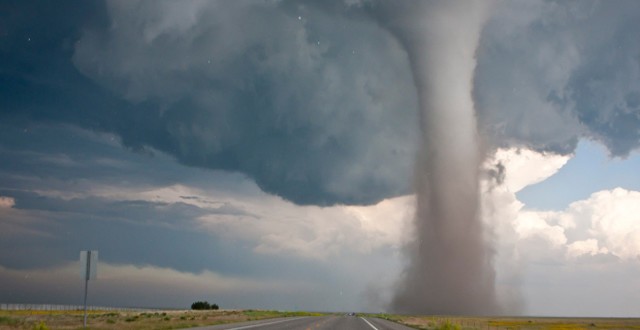Tornadoes can be devastating acts of nature. These thunderstorms can reach winds of 300 miles per hour, and can devastate neighborhoods and towns in minutes.
FEMA, the Federal Emergency Management Agency, says the peak tornado months are March through May in the southern states and from late spring through early summer in the North.
How to prepare yourself when a tornado warning has been issued? With little time to prepare, how you respond becomes critical.
If You’re In a Frame House
- Make sure you have a portable radio, preferably a NOAA weather radio, for information.
- Seek shelter in the lowest level of your home (basement or storm cellar). If there is no basement, go to an inner hallway, a smaller inner room, or a closet. Keep away from all windows.
- You can cushion yourself with a mattress, but do not use one to cover yourself. Do cover your head and eyes with a blanket or jacket to protect against flying debris and broken glass. Don’t waste time moving mattresses around.
- Keep your pet on a leash or in a carrier.
- Multiple tornadoes can emerge from the same storm, so do not go out until the storm has passed.
- Do not leave a building to attempt to “escape” a tornado.
- If you are in a manufactured (mobile) home, leave immediately and take shelter elsewhere.
If You’re Outside
- Try to get inside and seek a small protected space with no windows.
- Avoid large-span roof areas such as school gymnasiums, arenas, or shopping malls.
- If you can not get inside, crouch for protection beside a strong structure, or lie flat in a ditch or low-lying area and cover your head and neck with your arms or a piece of clothing.
If You’re In a Car
If you are caught outdoors, seek shelter in a basement, shelter or sturdy building. If you cannot quickly walk to a shelter:
- Immediately get into a vehicle, buckle your seat belt and try to drive to the closest sturdy shelter.
- If flying debris occurs while you are driving, pull over and park. Now you have the following options as a last resort:
- Stay in the car with the seat belt on. Put your head down below the windows, covering with your hands and a blanket if possible.
- If you can safely get noticeably lower than the level of the roadway, exit your car and lie in that area, covering your head with your hands.
 Thfire.com Everyday news that matters
Thfire.com Everyday news that matters 
